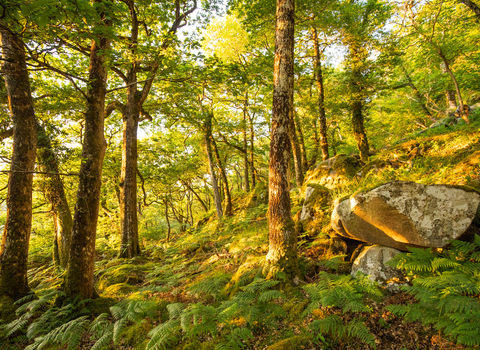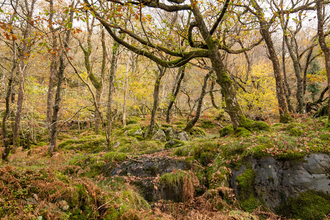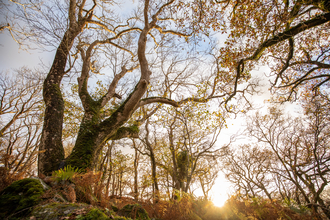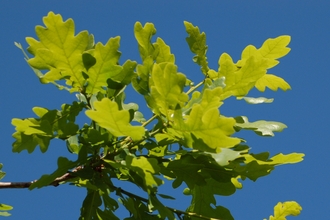The Wildlife Trusts have embarked on an ambitious 100-year journey to restore one of the rarest and most precious woodland habitats across the British Isles: our lost temperate rainforests.
These precious, romantic woods once covered much of the wet, west coast of Britain, from Cornwall to Scotland and across to Northern Ireland and the Isle of Man. But these days there are just a few fragments left that have become all the more special for their rarity.
The 100-year temperate rainforest restoration programme will restore approximately 1,755 hectares of temperate rainforest across the British Isles.
Native to the British Isles, temperate rainforest is an incredibly rare and biodiverse habitat, rarer even, than its tropical counterpart. Once covering a fifth of our land, it is now limited to scattered fragments totaling approximately 1% of the UK.
Explore our rainforest restoration sites
Temperate rainforest is often affectionately described as woodland where there is ‘green on green on green’, due to the hundreds of species of plants and lichens which cover every available surface. Tree varieties can include oak, hazel, holly, alder, rowan, birch, and willow, and their trunks serve as the ideal surface for the growth of numerous mosses, lichens, fungi, ferns, and liverworts. Areas of rainforest often feature open glades or river gorges too. Conditions for growth require a very particular oceanic climate: wet, humid, and without extremes of temperature. Many of the moisture-loving plants mentioned above also depend on the air being relatively free from pollution.
This programme will go a step further than traditional habitat restoration and will work to create entirely new rainforests on eligible sites across the bioclimatic envelope (the area typically along our Atlantic coastline with the specific conditions needed for rainforest to thrive). We aim to reconnect the few, fragmented sites that remain and create bigger areas of well managed rainforest - the start of a 100- year journey to rebuild the lost rainforest of the British Isles.
The Temperate Rainforest Restoration Programme Impact Report
Read more about the ongoing progress and impact of the Temperate Rainforest Restoration Programme in sequestering carbon, enhancing biodiversity, and benefiting local communities.
Made possible by a generous donation from Aviva, we have the opportunity to tackle the climate and nature emergency by restoring this ecologically important habitat. Over the course of the programme, 1,755 hectares of rainforest will be created with an estimated 222,000 tonnes of carbon sequestered by 2050, doubling to 440,000 tonnes by 2060. You can find out more about our partnership with Aviva here.
Some of the amazing new sites created through this programme include Bowden Pillars in Devon, Bryn Ifan in North Wales, Creg y Cowin and Glion Darragh on the Isle of Man, Trellwyn Fach in Pembrokeshire, and – most recently - Skiddaw in Cumbria. Each site is owned and managed by the local Wildlife Trust and encompasses several other initiatives which will run in tandem to the tree planting: agroforestry schemes, community engagement, volunteering opportunities, and eventually some low-impact grazing will all work to enrich the wider programme and ensure its success well into the future.
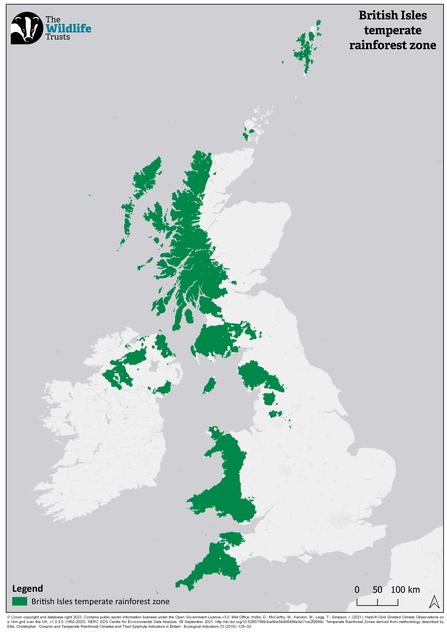
Monitoring forms a significant part of ongoing work at each new site. Trusts are collecting several sources of baseline biodiversity data before planting begins. Surveys look at all sorts of wildlife, from breeding birds to bryophytes (mosses, liverworts, hornworts), and lichens to butterflies and bats. Aerial mapping will be carried out by drones. Accurate baseline data and subsequent monitoring will help show how exactly biodiversity, soil and water quality, and tree cover changes as sites transform into young temperate rainforests.
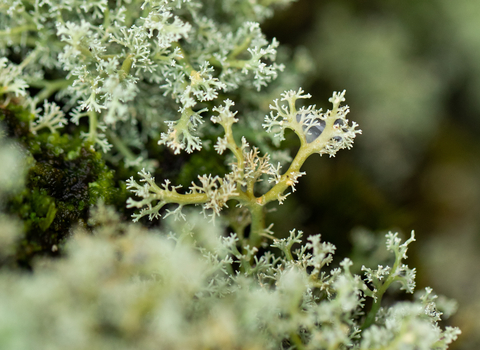
Ben Porter
Temperate Rainforests Research Programme
A research fund of £450,000 has been established to support projects that fit with the research objectives of the programme. The aim is is to further our understanding of the status, management and restoration of temperate rainforests in the changing climate of the Bristish Isles.
Aviva’s donation and continued partnership has enabled us to make a strong start in acquiring new nature reserves for temperate rainforest, as well as managing those reserves for the next 100 years. We will continue to fundraise for vital work needed to help this habitat recover at scale. To explore how your organisation can invest in substantial high-quality carbon removals on a national scale, please contact us here. Alternatively, for smaller-scale carbon removal projects, find your local Wildlife Trust to discover opportunities tailored to your region. While the Royal Society of Wildlife Trusts (RSWT) collaborates with national partners on large-scale initiatives, local Wildlife Trusts offer impactful, community-focused projects that deliver meaningful carbon reductions at a regional level.

